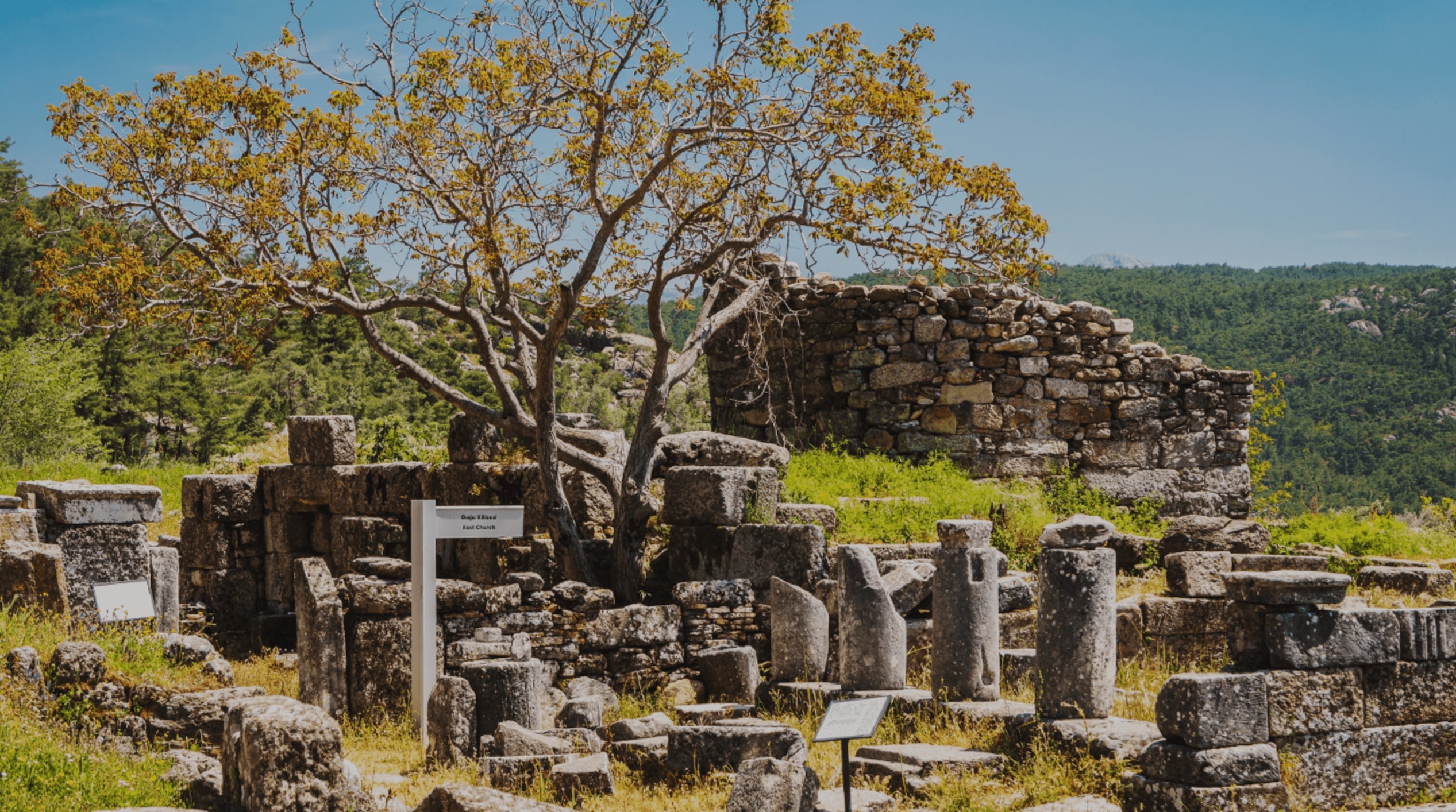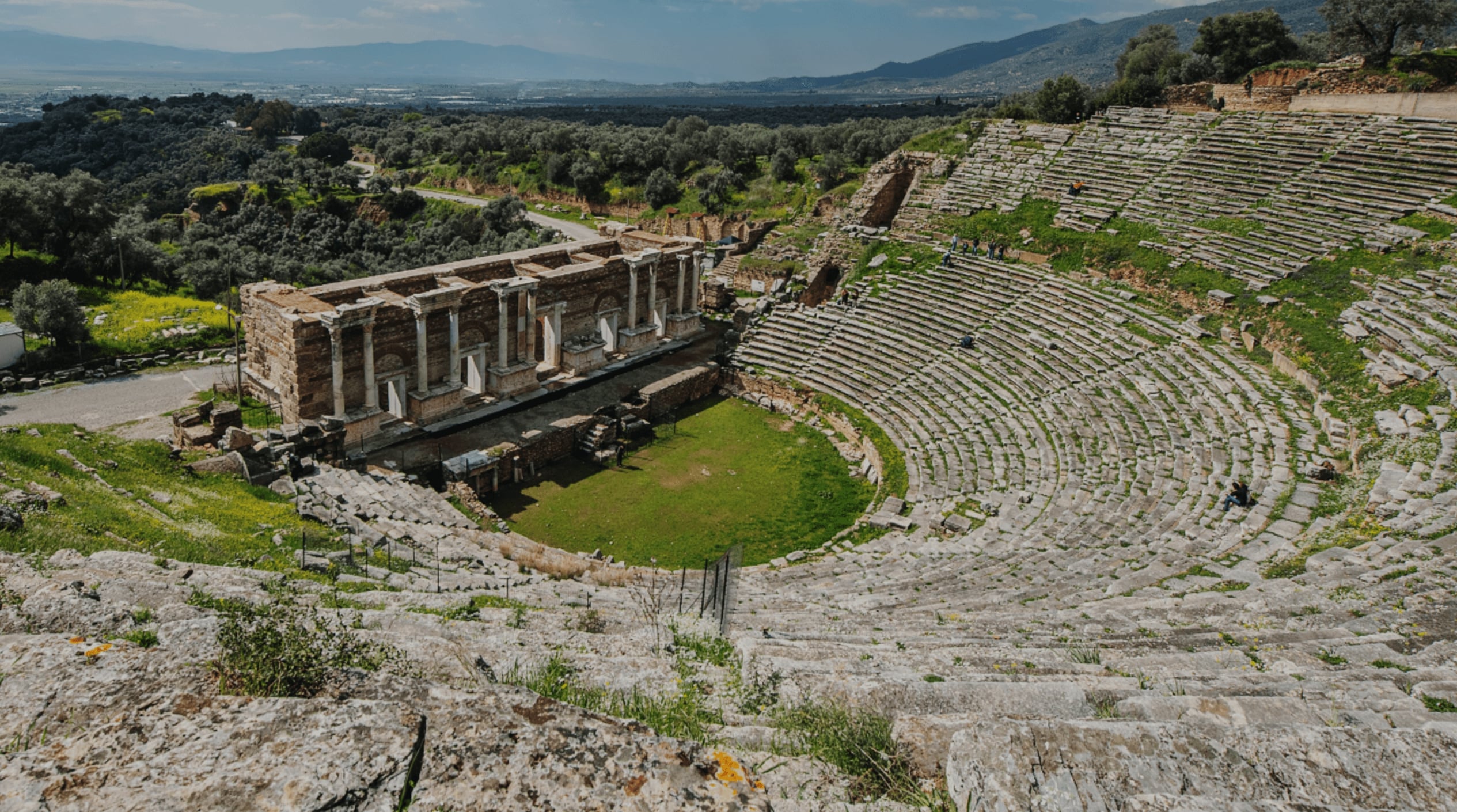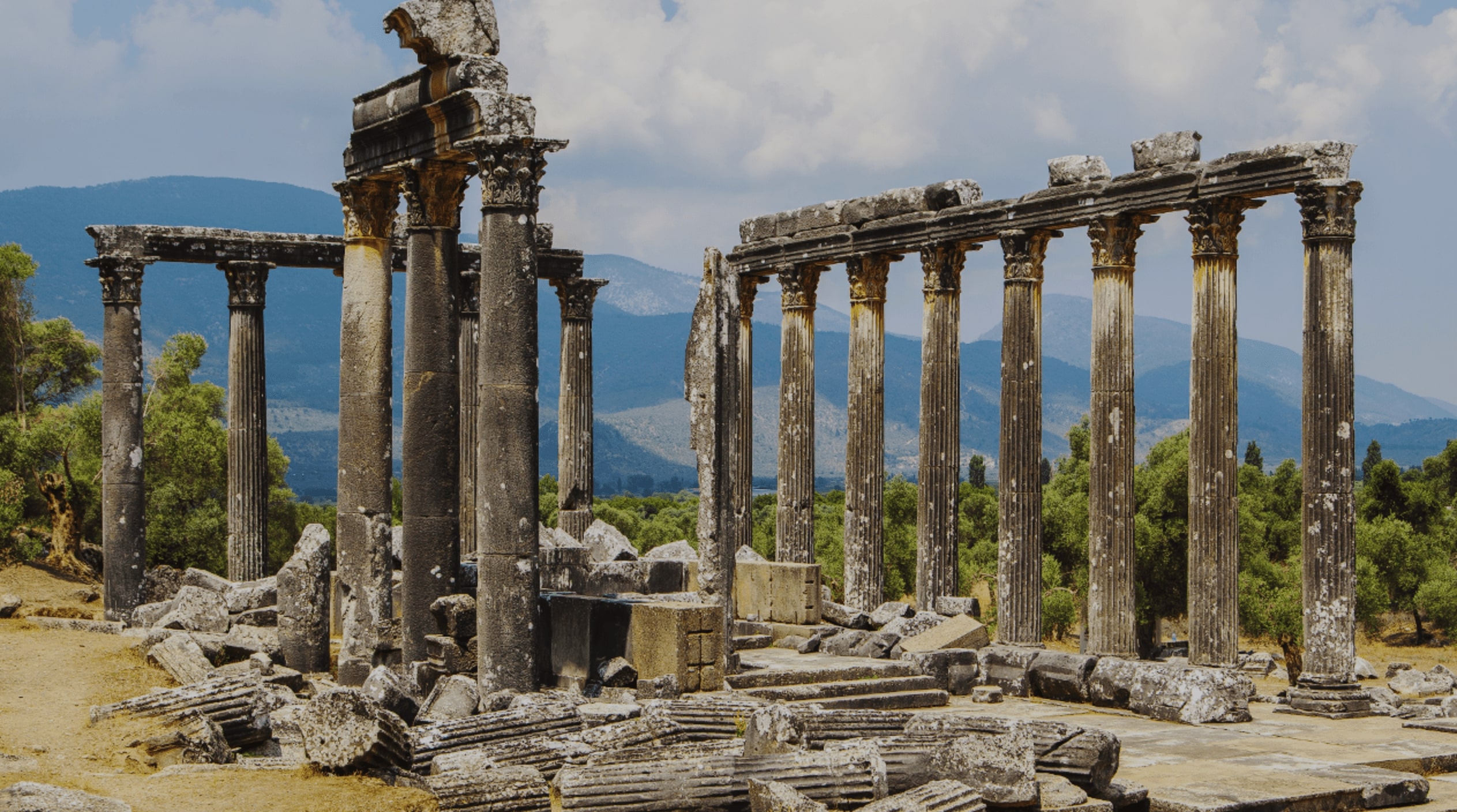
16.05.2025
6 Dakika
Caria is the name given during ancient times to the southwestern region of Anatolia and the region covering nowadays the provinces of Muğla and Aydın as well as the west of Denizli. The region is thought to be the homeland of the Carians, who built a unique civilization, and there are historical settlements carrying traces of the cultural interactions of different civilizations. As the wall paintings in the region indicate, many archaeological sites have survived from Caria, where human settlement dates back to the 8th millennium BC. We will uncover 4 of these archaeological sites with interesting information facts — each of which are important attraction centers for history buffs visiting Türkiye.

It is thought that the origin of Labraunda dates back to the 4th century BC, when it was a place of worship consisting of a primitive temple and a plane grove. Another important assumption about this ancient city is that Hecatomnids — who were dominant in the region at that time — used Labraunda as a propaganda venue by taking advantage of its mystical atmosphere. When you visit the remains of Labraunda within the borders of Muğla in the present day, you step into a truly captivating atmosphere, where you can drink the water flowing from the cleft rock — which is part of the mythological narrative — sit on the stairs in the settlement shaped around a sanctuary, and dream of the people participating in rituals in ancient times.

It is possible to see in the ancient city of Nysa — located in Aydın and dates back to the 3rd century BC — a well-preserved theatre structure where you can find traces of many mythological characters such as Pluto, Korea and Dionysus, the Stadion, whose magnificence can be imagined from its remains, the large Agora dating back to the Late Hellenistic Period, and one of the Gymnasiums with the largest central courtyard (palaestra) in Anatolia. By stepping through the monumental entrance of this ancient city, where you fully immerse yourself in the mystical atmosphere of ancient history. you would imagine yourself as one of the travellers of centuries ago.

Aphrodisias — a UNESCO World Heritage Site — can be considered as a massive marble art workshop from the ancient times. The ancient city, which stands out with its sanctuary dedicated to Aphrodite — the patron goddess of the city — and its unique marble works, is among the must-see archaeological sites for both history and art enthusiasts. As a result of its advantageous location far from the main crossroads in Anatolia, the well-preserved settlement is home to marble sculptures and architectural elements of outstanding value. You should definitely see this magnificent ancient city that reflects the unique craftsmanship and wealth of centuries ago.

The ancient city of Euromos within the borders of Muğla, which has survived from the 2nd century AD and hosts one of the best-preserved temples in Anatolia. In the temple outside the city, remains belonging to at least 3-4 different structures built in the Archaic Age were found. This indicates that the site has been used as a religious center since much earlier times.
In Euromos — one of the most important cities of the Carian cities after Mylasa in the ancient times — it is possible to see the remains of a theater with a capacity of 2,000 people, the city walls, and the towers of the defense system that have survived to the present day.
According to Herodotus, the Carians were the indigenous people of Anatolia, named after their founding ruler, and naturally these 4 archaeological sites are not the only ones to be discovered in this land. You should definitely include this region, where you can see many unique monuments including the remains of Halicarnassus Mausoleum which is considered one of the Seven Wonders of Ancient World, in your travel plan. One of Türkiye's most beautiful seaside vacation spots, Muğla and Aydın are the best places to embark on a journey intertwined with history. Check out the Turkish Museums blogs for more content that may be of interest to you and help you shape your travel plans. Click to view other blogs on Turkish Museums pages!